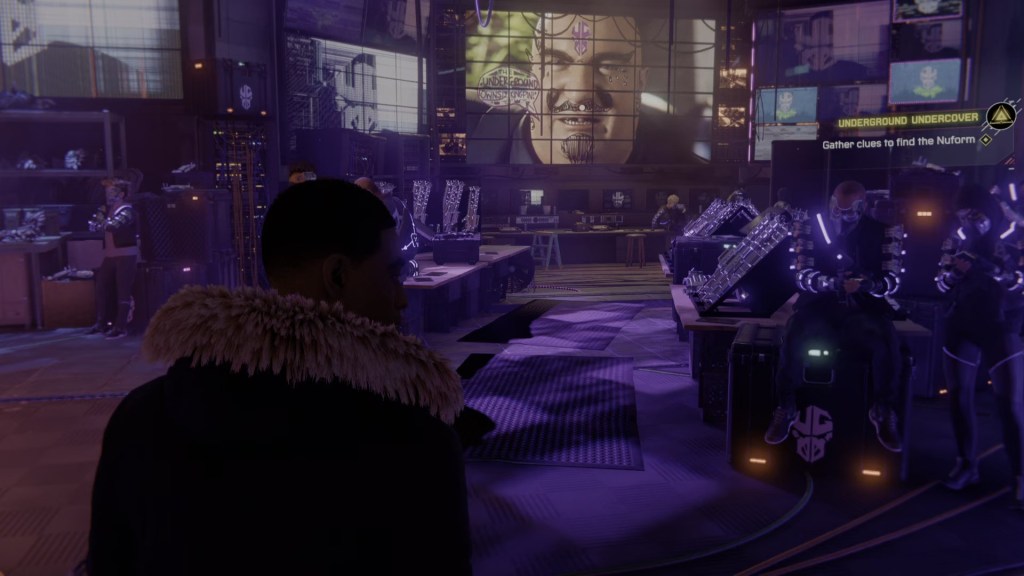Last year, I played through and reviewed Marvel’s Spider-Man for the PlayStation 4. It was a fun game that played very well, but had some narrative issues – some of which were iffy at the time of the game’s initial release, and had aged even worse by the time George Floyd had been murdered by a police officer. So, we now have a new expansion for the game, focusing on Miles Morales, who had developed his powers at the end of the last game, and centering him in the story. The question is, can it also address some of the main game’s narrative hiccups?
First off – Spider-Man: Miles Morales, being an expansion of the main game, and being built off of that core game-play, has everything that worked about the main game’s game-play right out of the gate. The web-slinging, the fundamental combat and stealth mechanics, all of those were rock solid in the core game, and they’re still solid now. There aren’t any dramatic sea-changes in terms of how those mechanics work, just some changes in how they articulate specifically related to Miles’ personal power-set, and how that differs from Peter’s. Those articulations go in two main areas – bio-electricity (or venom powers – with a small “v”, because there’s the matter of the alien symbiote in the room), and invisibility.
Miles has his various Venom attacks, that let him do an amped up attack on an opponent or group of opponents, which (with skill upgrades) can spread out to additional opponents on top of that. These range from dash attacks that can close the distance from an opponent in a minute, to big ground pound attacks that hit everyone in a blast radius. The invisibility powers also change up the way stealth sequences work, allowing the player, when they are spotted (but before the alert is kicked on) to activate invisibility and quickly move away from whatever opponent they’d taken out before the invisibility wears off.

That said, a few of my favorite gadget powers are missing here. In particular, Miles only has 4 web gadgets: webbing, a gravity weapon that bunches opponents together (allowing them to be a perfect target for the ground pound), an electric mine (which can stun enemies or knock them out entirely if attached to a power source before detonation), and holographic decoys that can actually damage enemies (and also spread confusion among enemies (or at least draw some off so you can focus your attention on a particular problem). Peter’s tripmine web – which would detect when an enemy walked in front of it, grab them, and then web them to a wall, sadly isn’t present in this game. This is a bummer as that was one of my favorite web gadgets.
Finally, there’s the matter of the story. Marvel’s Spider-Man was legitimately criticized for some elements of the plot that were described as being copaganda. Between Spidey’s borderline official working relationship with the NYPD (on top of the cringy “Spider-cop” bits), and the use of mass surveillance towers created by Oscorp (known in the Marvel universe as the third least trustworthy corporation behind Roxxon and Hammer Industries) as the game’s version of Ubisoft-Unlock-Stuff-On-The-Map tower – which the player got access to by fixing, a valid response from players was to look at the story and go “What the actual hell?”
By contrast, while Miles’ now deceased (in this universe) dad, Jefferson, was a cop, the game generally doesn’t have Miles getting that buddy-buddy with the NYPD. He’ll do side-quests helping out EMTs and fire fighters (and even the MTA), but is never directly working to assist the police, aside with a few crimes-in-progress calls related to stopping high speed chases.

Where things get a little messy are with the antagonists. Once again – to avoid having to say anything directly about the militarization of the police, rather than having the police directly be antagonistic, we instead put Roxxon Energy as the clear-cut villains, with their heavily armed corporate security in their place. However, the writers are definitely intending to use Roxxon Security as that analog, complete with a bit where citizens film Roxxon preparing to attempt to execute an unarmed and mostly helpless Spider-Man (in this case Miles), with Roxxon Security responding by preparing to turn their weapons on the citizenry – only being stopped by Miles’ invisibility powers activating for the first time.
Then there’s our other antagonist group – the Underground, a seemingly DedSec-esque group lead by the Tinkerer. I say seemingly because over the course of the game, the narrative develops that apparently only the Tinkerer themselves (I’m not giving away their identity because it’s a bit of a spoiler) has any sort of hacktivist ambitions, and the group is established as being more of one that wants to take up the void left by Fisk, the Demons, and Tombstone’s gang being taken down in the last game – and is only equipped to do so thanks to the Tinkerer’s expertise. That development feels like a transparent decision made to give the player a reason to not stress out over beating up the Underground and to continue to view them as a semi-villain group.

In all, I liked the game, and I do want to spend more time playing as Miles Morales in a future Spider-man game like this one – and I do also hope that it does get adapted to make room for other Spider-characters as well, particularly Spider-Gwen/Ghost Spider, and Silk.
Spider-Man: Miles Morales is available from Amazon.com. I played the PS5 version, so that is what I linked here. Buying anything through that link helps to support the site.
If you enjoyed this blog post and would like to help to support the site, please consider backing my Patreon. Patreon backers get to access my reviews and Let’s Plays up to a week in advance.
If you want to support the site, but can’t afford to pledge monthly, please consider tossing a few bucks into my Ko-Fi instead.

